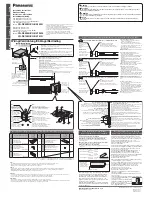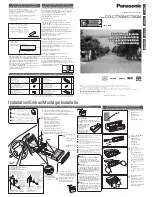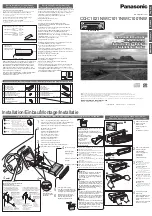
sometimes
the
videos
you
acquire
may
not
be
playable
on
all
players.
In
this
case,
you
should
check
your
compression
settings
(bitrate,
audio
codec,
and
other
parameters)
and
use
a
compatible
setting.
If
the
files
can
play
on
your
PC
but
not
on
your
player,
you
should
recompress
the
file
to
ensure
playback.
For
greatest
compatibility,
we
recommend
outputting
to
the
WMV
format
(VC
‐
1
codec,
3
to
5
Mbps
bit
‐
rate).
You
can
recompress
unplayable
video
files
with
recommended
file
formats
and
bit
rates
using
the
free
and
open
source
Handbrake
tool
at
http://handbrake.fr/
.
Once
you
have
found
the
right
output
settings
for
size
and
quality,
save
them
in
Handbrake
profiles
for
future
use.
Then
you
can
easily
recompress
any
unplayable
files
you
encounter
in
the
future.
The
media
playback
looks
different
on
a
PC
compared
to
the
media
player’s
screen.
(Wrong
aspect
ratio)
There
are
2
major
aspect
ratios
(width
‐
to
‐
height
ratios)
for
video
content,
but
many
kinds
of
displays.
If
you
play
4:3
video
on
a
16:9
display
(or
vice
versa),
a
circle
becomes
oval,
and
the
picture
takes
on
a
squeezed
or
stretched
look.
To
avoid
this
distorted
look,
adding
black
bars
are
a
common
technique.
The
Network
Media
Player
can
be
configured
to
automatically
add
black
bars
for
certain
types
of
displays.
You
can
set
the
output
resolution
in
XMP
‐
300’s
configuration
menu
to
match
the
native
resolution
of
your
display.
Some
JPEG
images
cannot
be
played
in
the
media
player.
Progressive
JPEG
are
not
supported.
Please
convert
to
baseline
JPEG
for
maximum
compatibility.
JPEG
images
can
be
either
of
2
types:
baseline
or
progressive
compression.
Baseline
JPEG
offers
greatest
compatibility,
while
progressive
JPEGs
are
suitable
for
web
site
images.
Progressive
images
are
downloaded
and
displayed
“progressively,”
being
rendered
more
clearly
as
more
data
is
received
over
the
internet.
Devices
with
local
storage
such
as
the
CF/Network
Media
Player
are
usually
incompatible
with
the
latter
type.
Make
sure
to
save
images
as
baseline
JPEG
in
your
photo
editor,
or
resave
them
as
baseline
JPEGs
using
free
tools
such
as
Paint.net
(
http://www.paint.net/
).
Does
the
media
player
support
video
streaming?
No,
all
media
files
are
designed
to
play
from
local
storage
(HDD
or
CF
card).
During
content
and
schedule
sync,
contents
are
transferred
to
player’s
local
storage
before
being
presented
on
screen.
This
ensures
the
best
possible
presentation
and
fluid
delivery
of
your
video
message.
Video
streaming
raises
many
playback
quality
issues
such
as
image
freezing,
blocking,
or
blue
‐
screens,
costing
you
valuable
“air
time”
and
losing
your
audience's
attention.
The
media
player
is
not
playing.
What
should
I
do?
Check
the
player’s
messages
on
the
display
(OSD,
or
on
screen
display)
for
status
information.
Since
RISC
‐
based
media
player
usually
lack
input
devices
such
as
keyboard
or
mouse
like
PCs,
troubleshooting
is
usually
based
on
user’s
knowledge
and
experience
with
the
specific
media
player.
First
check
the
on
screen
message
and
stats
reports.
Bad
play
list
and
timing
issues
are
two
major
causes
of
playback
problems.
To
determine
if
the
problem
is
caused
by
a
bad
play
list,
simply
delete
the
play
list
and
restart
player.
The
player
should
loop
through
all
media
files,
indicating
a
fault
with
the
play
list.
If
the
playback
is
scheduled
to
play
at
specific
time,
check
to
see
if
the
device
is
set
to
the
right
time
zone
on
the
world
clock.
When
nothing
seems
wrong,
the
time
zone
setting
is
often
the
reason
the
program
is
not
played.
How
do
I
eliminate
the
1
second
display
blackout
during
video
or
photo
transitions?
A
1
second
gap
between
any
2
video
files
or
any
2
photos
is
a
known
limitation.
Gapless
image
playback
is
being
added
in
a
future
firmware
release.
Summary of Contents for XMP-300
Page 10: ......

































